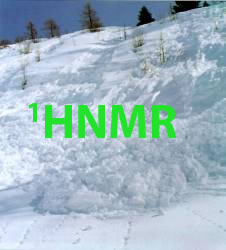| |
Compound 66 (see below) (6 × 1g, 19.2 mmol) was dissolved in dry THF (6 × 100 mL) and degassed with bubbling N2 for 30 min. The solution was subject to UV light irradiation (450 W Havovia lamp, pyrex filter) in 6 sealed pyrex tubes (120 mL) until the photocycloaddition was complete, as determined by 1H NMR. The solvent was removed and the yellow oil (6 g) was redissolved in THF/MeOH (1:1, 400 mL). Concentrated sulfuric acid (1 mL) was diluted with MeOH (15 mL) and cooled to room temperature before it was added dropwise to the reaction solution. After the addition of H2SO4, the solution was stirred at room temperature for 3 h before H2O (50 mL) was added. The mixture was stirred for another hour and quenched with saturated aqueous NaHCO3 (200 mL). The mixture was extracted with DCM (2 mL × 500) and the combined organic layers were dried over MgSO4. The solvent was removed under reduced pressure and the residue was purified by column chromatography. (SiO2, hexanes: EtOAc = 4:1 to 1:1) to give (+)-79 (3.2 g, ~50%) as white solid. Cyclobutane 79: 75% ee as determined by Mosher analysis (see Figure S4); M.p. = 140- 143°C, EtOAc/hexanes; Rf = 0.29 (hexanes: EtOAc = 1:1); [α]D = + 33° (c = 0.9, CHCl3) (after recrystalization (50% recovery) from (hexanes: EtOAc= 2:1): [α]D = + 44° (c = 0.6, CHCl3)); IR (film) νmax 3305, 2360, 1710, 1645, 1542, 1314, 1222, 1181, 1108, 699 cm-1; 1H NMR (400 MHz, CDCl3) δ 7.34-7.24 (m, 5H), 6.84 (br, 1H), 4.95 (sep, 1H), 4.45 (d, J = 5.6 Hz, 2H), 3.90 (t, J = 10 Hz, 1H), 3.75 (dd, J = 10 Hz, J = 8.5 Hz, 1H), 3.57 (t, J = 8.5 Hz, 1H), 3.21(dd, J = 10 Hz, J = 8.5 Hz, 1H), 2.31 (s, 3H), 2.06 (s, 3H), 1.17 (d, J = 6.4 Hz, 3H), 1.12 (d, J = 6.4 Hz, 3H); 13C NMR (100 MHz, CDCl3) δ 209.5, 206.7, 171.2, 170.1, 137.9, 128.6, 127.4 (2 C), 69.3, 47.7, 47.0, 44.3, 43.4, 40.3, 33.1, 27.0, 21.6, 21.4 (2 sets of equivalent carbons on benzyl group); HRMS (ESI-TOF) calcd. for C20H26NO5 [M + H+] 360.1811, found 360.1800. |







